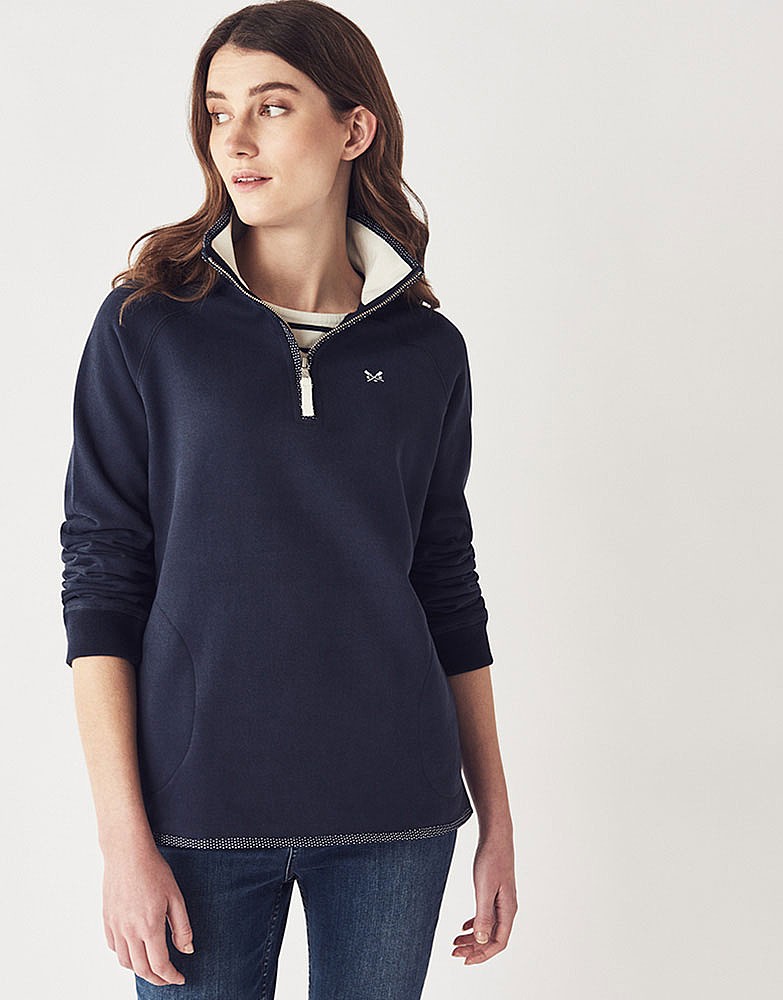Sweatshirts are long-sleeved tops that are made of thick cotton cloth. They are usually used for casual wear, and are not so formal as sweaters and cardigans. They do not usually have a hood. If you're thinking of buying a sweatshirt here are some tips:
Norma Kamali spread the appeal of sweatshirts
Since the late 1970s the Norma Kamali brand has transformed the basic sweatshirt into an art. Her designs are now an essential part of every woman's closet. Her unique designs vary from a tummy-tucking neck , to leather paneled sweatshirts. She also has created clothes with unusual designs, like an oversized tank top that has an extended trumpet skirt.
A partnership of the designers and sweatshirt maker Everlast led to her Timeless collection, which was an instant hit when it debuted in the Spiegel spring 2006 catalog. The collection was made up of convertible and interchangeable knits with classic designs, and many pieces were priced under $20. Even if The Norma Kamali Timeless collection wasn't available in stores, fans were able to find the pieces through eBay or Poshmark.
Merino wool sweatshirts are more comfortable than sweatshirts made of soft wool.
Merino wool is known for its ability to remove moisture which help to keep you comfortable and dry. Merino wool is an organic fibre that also has a smoother feel. The fabric also dries quickly when compared with other natural materials. Furthermore, merino is a sustainable resource. Merino sheep shed their coats every year and regrow new ones.
Merino's weight-to-heat ratio is high, and the warmth of wool is what makes it a popular choice for sweatshirts . It helps to regulate body temperature due to its natural loft, which retains heat between the fibers. This is the reason Merino wool sweatshirts work ideal for outdoor and summer activities such as mountain biking, hiking and running. The warmth they provide ensures that the wearer stays cool and dry, which is essential when working out.
Zip-front hoodies feature kangaroo pockets.

Kangaroo pocket Hoodies are a very popular type of hoodies. They feature a big pocket at the front which helps keep your hands warm during cold days. They're much more practical than traditional pockets as they allow the hands to slide in and out effortlessly.
Kangaroo pockets are usually large enough to hold a wallet or some other smaller personal items. sweater shirts enough to accommodate the palm of a hand that is small or even sufficient to hold two hands. sweat shirts feature wide openings on either side , and are ideal for carrying small items.

French terry fabric is a very popular material for sweatshirts
The French Terry fabric is constructed of soft yarns made into loops, and are usually mid-weight. It is also known as a fabric that wicks moisture and is pre-shrunk. French Terry is an excellent option for sweatshirts since it is warm when you're in need and also keeps you cool when you need to cool off.
French terry is also popular for loungewear, since it is stretchy enough and has enough flexibility to feel comfortable on your skin. It also allows for enough air to circulate throughout the fabric, making it ideal for layering under other clothes. Furthermore, because it's lighter than other sweatshirts, you can wear it throughout the year without feeling too either cold or hot.
Hoodies have classist connotations
Although it might appear that hoodies are simply an appropriate attire item for working class people but the truth is that they have a classist connotation. Hoodies were first popularized in the early 1970s , in New York, where graffiti artists wore them to hide their identities. In 1976 the hoodies made their big film debut in "Rocky," when the working-class main character was seen wearing hooded gray sweats on his memorable climb to the top of the Philadelphia Museum of Art.
Hoodies are often associated with destruction, death, and other undesirable things, but they can also be used for practical reasons. For instance, priests and monks can wear hoods to demonstrate respect and a sense of self-control.
